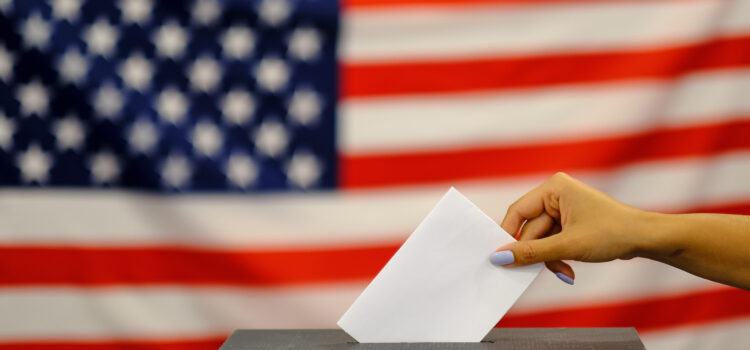
Despite the difficult obstacles brought by the Covid-19 pandemic, early voting rates are abnormally high. According to the United States Voting Project, the turn-out rate in the 2016 election was only 60.1 percent.
This was low in comparison to U.S peers, in the Organization for Economic Cooperation and Development (OECD), most of whose members are highly
developed, democratic states. The U.S. placed 26th out of 32 that national election year.
In 2020, pre-election voting has already surpassed 2⁄3 of the total number of ballots cast in 2016.
This can be tied to the fact that mail ballots were sent out to every registered voter, due to high concern of spreading the virus. Mail-in ballot numbers have also skyrocketed, as many voters want to avoid areas of crowding.
It can also be attributed to the widely held view that the presidential election is high-stakes. One poll by YouGov found that about 7 out of 10 Americans believed the 2020 election is the most important of their lifetime.
Despite these facts, in-person voting is still available on election day. Election Day is Tuesday, Nov. 3 and the polls are open from 7 a.m. to 8 p.m. You have the right to vote as long as you are in line by 8 p.m.
In California, residents can register to vote up to and on election day. A provisional ballot will be given, as the traditional deadline has passed, but the vote will still be counted once eligibility is confirmed. Conditional voter registration is a safety net for Californians who miss the deadline to
register to vote or update their voter registration information.
Mail-in ballots can also be dropped off at the polls if they have not been dropped off at polling places prior to election day.
The Secretary of State reported that, since 2016, 3 million voters have registered to vote. This makes 84 percent of Californians registered, the highest it has ever been since 1952.
All these numbers demonstrate an upward trend, however, it is important to ensure that these rates do not become outliers in future data.
Under the Democracy Index 2019, by The Economist Intelligence Unit, the United States scored a 7.22 out of 10 under the category of political participation (one of the lowest scores in the report).
Increase voter turnout should not be limited to national government elections. We need to translate this energy and momentum into midterm elections. Since the 1840s, voter turnout always drops in midterm elections.
According to the Pew Research Center, “In 2008, for instance, 57.1% of the voting-age population cast ballots — the highest level in four decades — as Barack Obama became the first African American elected president. But two years later only 36.9% voted in the midterm election that put the House back in Republican hands. For Obama’s re-election in 2012, turnout
rebounded to 53.7%.”
In early American history, this was actually reversed and more voted during midterm elections than presidential elections.
This phenomenon is one of the most consistent patterns of American politics and has been tried to be explained by different theories. One is the surge-and-decline theory by Albert Angus Cambell, a social psychologist. His theory explains that it is due to political stimuli. Cambell suggests Midterm elections lack that “wow” factor, so turnout among both partisans and
independents return to more normal levels and patterns.
Brian Knight, a researcher at Brown University, found three plausible explanations. First, a general preference among midterm voters to their dissatisfaction with the president’s performance also known as the “presidential penalty.”
Second, voters try to ensure that the president’s party does not control all the levels of government. Lastly, it is a result of recurring shifts in voter ideology between presidential and midterm elections. Among these, he believes the presidential penalty is most significant.
No matter the causes, a person’s vote during midterms are more substantial. One reason is that there is not an Electoral College filter, so one vote equals one vote. Additionally, races are often close making the vote more impactful.